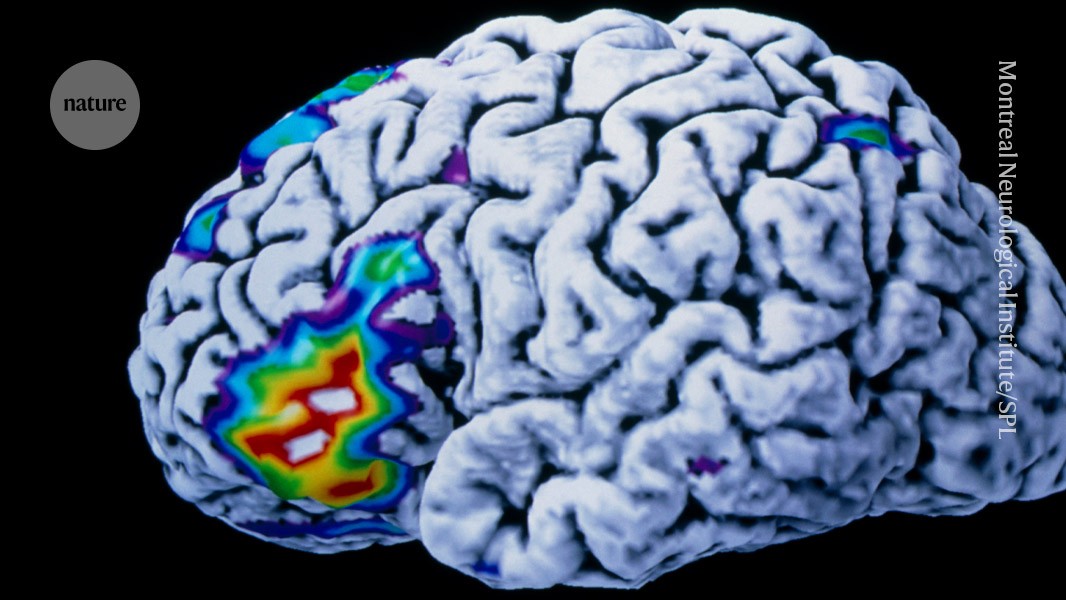Brain implant translates thoughts to speech in an instant

Improvements to brain–computer interfaces are bringing the technology closer to natural conversation speed

This scan of the brain shows activity in the speech cortex — a part of the frontal lobe involved in speech production.Credit: Montreal Neurological Institute/Science Photo Library
A brain-reading implant that translates neural signals into audible speech has allowed a woman with paralysis to hear what she intends to say nearly instantly.
Researchers enhanced the device — known as a brain–computer interface (BCI) — with artificial intelligence (AI) algorithms that decoded sentences as the woman thought of them, and then spoke them out loud using a synthetic voice. Unlike previous efforts, which could produce sounds only after users finished an entire sentence, the current approach can simultaneously detect words and turn them into speech within three seconds.
The findings, published in Nature Neuroscience on 31 March1, represent a big step towards BCIs that are of practical use.
Older speech-generating BCIs are similar to “a WhatsApp conversation”, says Christian Herff, a computational neuroscientist at Maastricht University, the Netherlands, who was not involved with the work. “I write a sentence, you write a sentence and you need some time to write a sentence again… It just doesn’t flow like a normal conversation.”
BCIs that stream speech in real time are “the next level” in research because they allow users to convey the tone and emphasis that are characteristic of natural speech, he adds.
Brain-signal reader
The study participant, Ann, lost her ability to speak after a stroke in her brainstem in 2005. Some 18 years later, she underwent a surgery to place a paper-thin rectangle containing 253 electrodes on the surface on her brain cortex. The implant can record the combined activity of thousands of neurons at the same time.
Researchers personalized the synthetic voice to sound like Ann’s own voice from before her injury, by training AI algorithms on recordings from her wedding video.
Enjoying our latest content?
Login or create an account to continue
- Access the most recent journalism from Nature's award-winning team
- Explore the latest features & opinion covering groundbreaking research
or
Sign in or create an accountdoi: https://doi.org/10.1038/d41586-025-01001-6
This story originally appeared on: Nature - Author:Miryam Naddaf


















